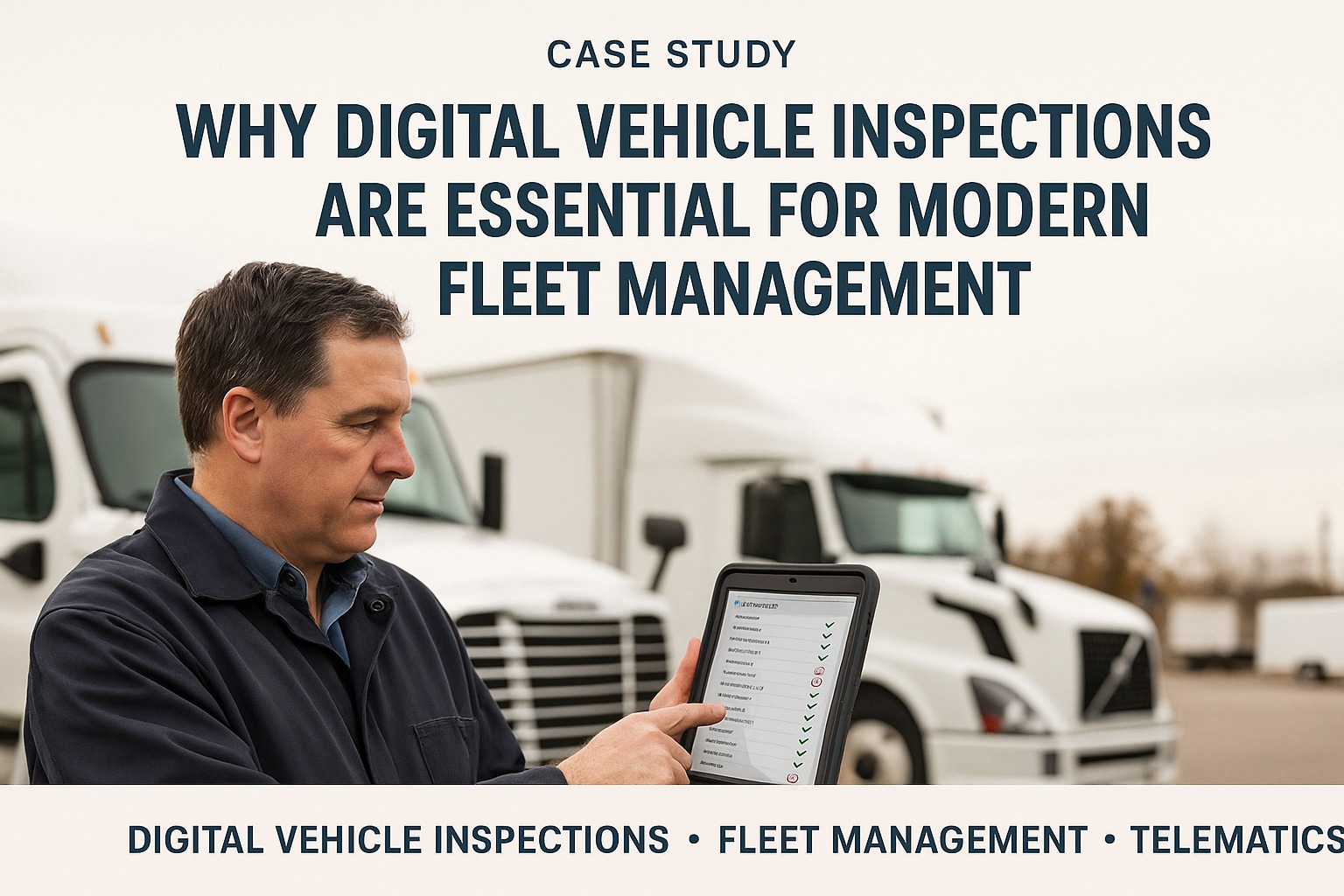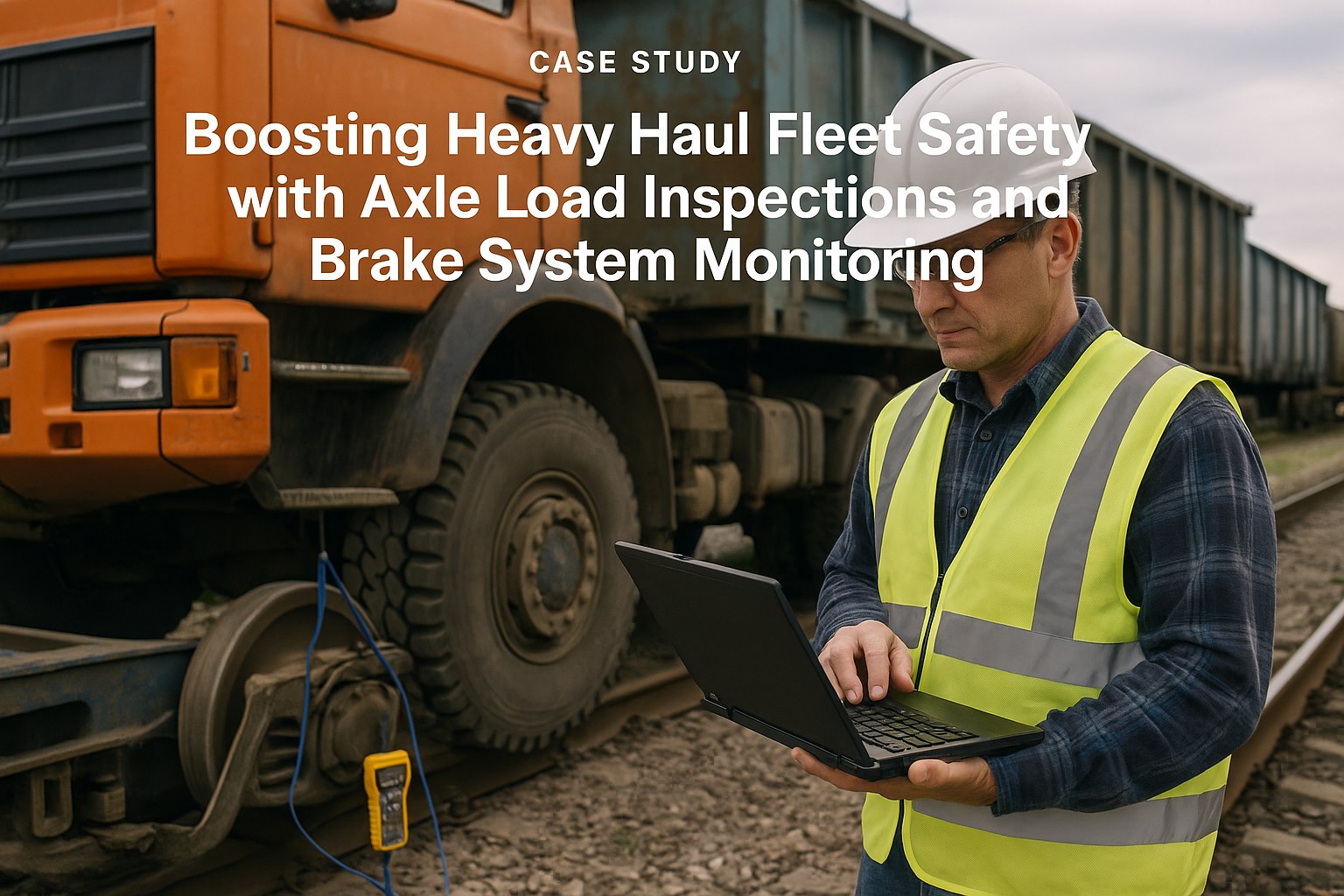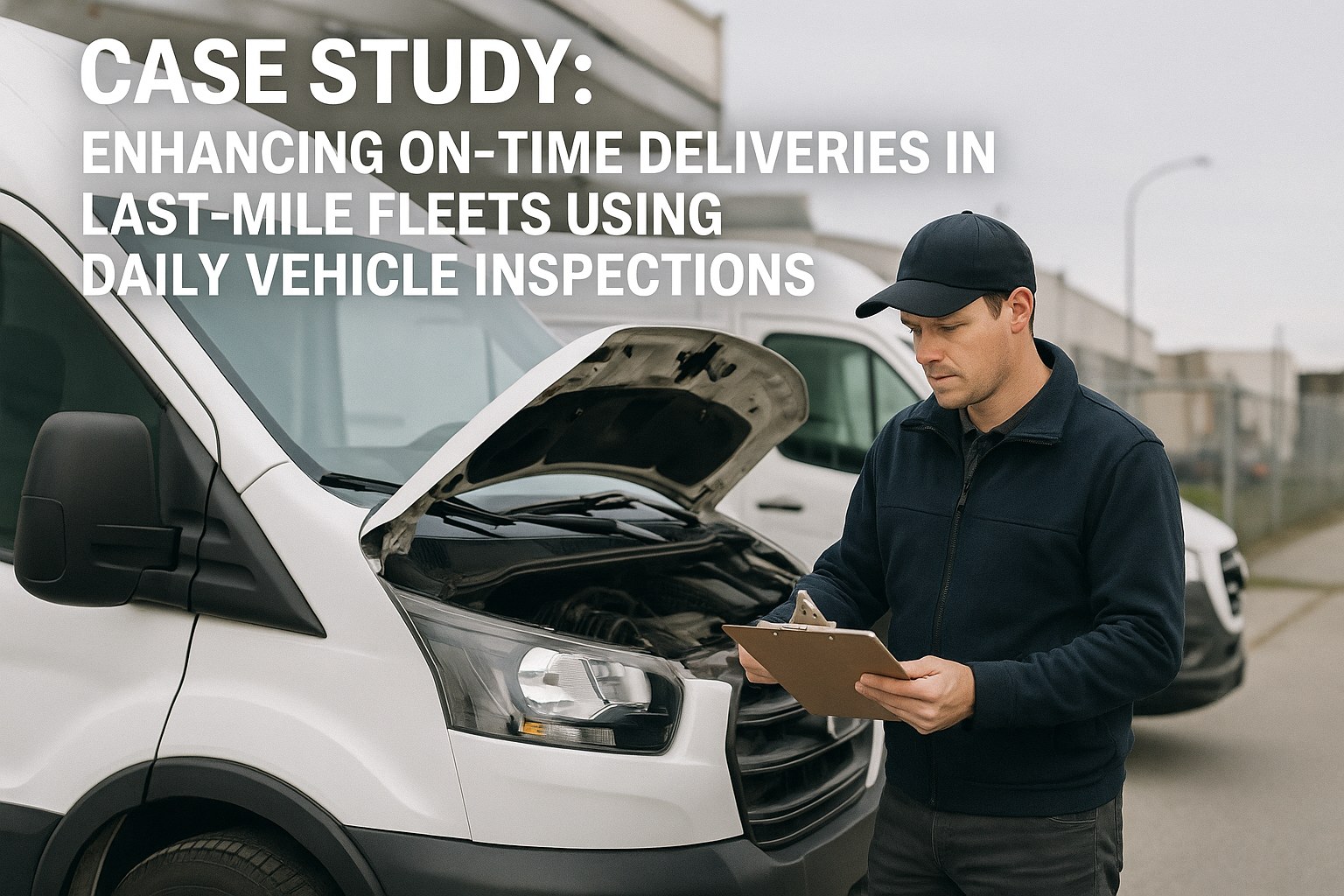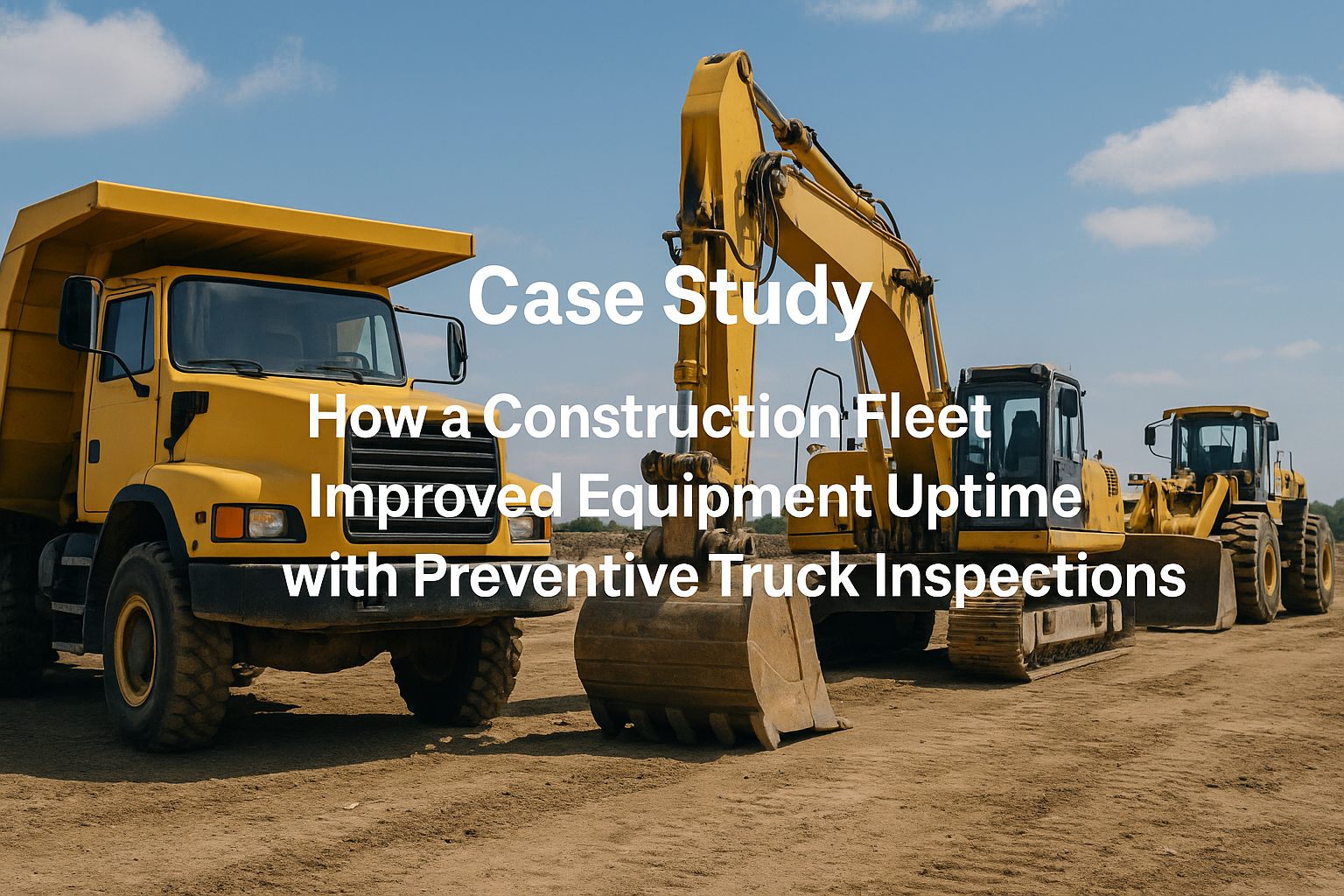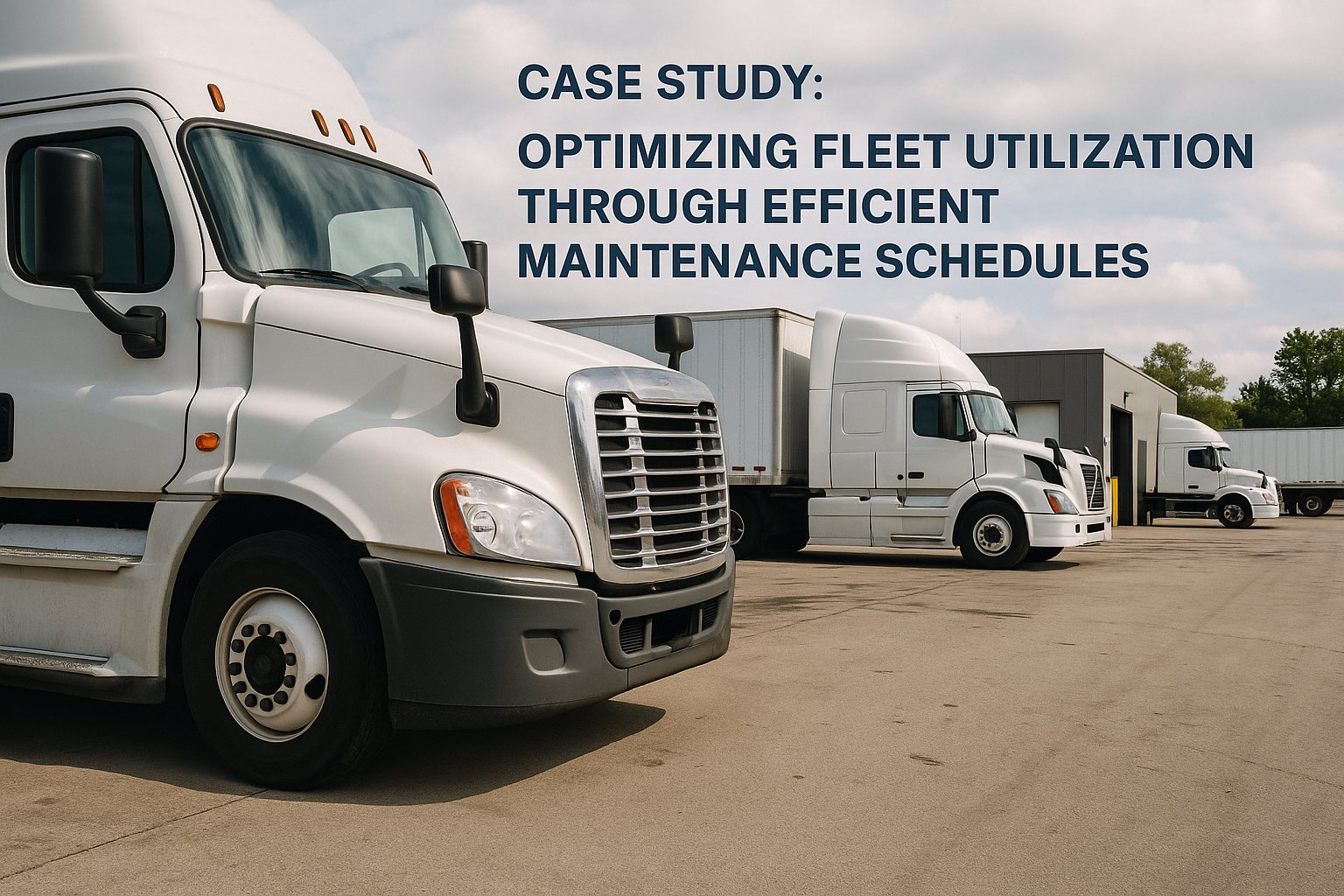Paper inspection forms scattered across dashboards. Clipboards lost in truck cabs. Hours spent deciphering handwritten notes. If this sounds familiar and you're experiencing the hidden cost of outdated vehicle inspection processes. In 2024, forward-thinking US manufacturing companies discovered that digital vehicle inspections don't just save time—they transform fleet operations entirely. This case study reveals how three industry leaders achieved remarkable results by embracing digital transformation.
The shift from paper to digital inspections represents more than a technology upgrade—it's a fundamental reimagining of fleet maintenance. Much like how healthcare facilities revolutionized hospital equipment management through CMMS platform andmodern fleets are discovering that digital inspections provide unprecedented visibility into asset health. The parallels are compelling: both industries require meticulous documentation, both face regulatory scrutiny, and both benefit from real-time asset tracking that maximizes uptime.
Consider the numbers: The average fleet spends 45 minutes per vehicle on paper-based inspections daily, translating to over 190 hours annually per truck. Digital inspections reduce this to just 8 minutes while capturing 300% more detail. For a 100-vehicle fleet, this efficiency gain alone saves $287,000 in labor costs annually. But the real value lies in what happens next—predictive maintenance, compliance automation, and operational intelligence that paper simply cannot provide.
The Paper Problem: Why Traditional Inspections Fail
Traditional paper-based vehicle inspections create a cascade of inefficiencies that compound over time. Beyond the obvious time waste, these outdated processes introduce errors, create compliance risks, and blind fleet managers to developing problems until they become expensive failures.
Hidden Costs of Paper Inspections:
- Data entry errors affect 23% of all paper forms
- Average 72-hour delay between inspection and data availability
- $15,000 average cost per missed critical defect
- 40% of inspection forms contain illegible entries
- Zero predictive capability from historical data
- Compliance documentation retrieval takes 4+ hours per audit
These challenges mirror those faced by healthcare maintenance teams before CMMS adoption. Just as hospitals couldn't afford equipment failures during critical procedures, manufacturing fleets cannot tolerate unexpected breakdowns during time-sensitive deliveries. The solution in both cases involves digital transformation that provides real-time visibility and predictive intelligence.
Case Study 1: Continental Manufacturing's Digital Revolution
Continental Manufacturing operates 175 trucks delivering components to automotive assembly plants across the Midwest. Their just-in-time delivery model meant that any vehicle breakdown could halt production lines, costing clients millions. In 2023, they embarked on a digital transformation that would redefine their approach to vehicle inspections.
The Challenge
Before digital transformation, Continental's inspection process was a liability. Drivers spent 35-40 minutes completing paper forms each morning, often rushing through checks to meet departure times. The maintenance team received these forms hours or days later, making real-time response impossible. Critical issues were missed, leading to roadside breakdowns that cost an average of $45,000 per incident in lost productivity and emergency repairs.
The breaking point came during a DOT audit that revealed significant documentation gaps. While drivers had performed inspections, poor handwriting and lost forms created the appearance of non-compliance. The resulting fines and increased scrutiny threatened Continental's operating authority.
The Digital Solution
Continental implemented a comprehensive digital inspection system that transformed their entire maintenance ecosystem. The solution featured mobile applications for drivers, cloud-based data storage, and AI-powered analytics that predicted failures before they occurred.
Key Implementation Features:
- Smart Mobile App: Drivers complete inspections in 8 minutes using guided workflows with photo documentation
- Real-Time Alerts: Critical issues trigger immediate notifications to maintenance teams
- Predictive Analytics: AI analyzes inspection data to forecast component failures
- Automated Compliance: System ensures all DOT requirements are met and documented
- Integration Hub: Connects with existing CMMS and parts ordering systems
Measurable Results
Within six months of implementation, Continental achieved transformative results that exceeded all projections:
Operational Improvements:
- Inspection time reduced from 38 minutes to 5 minutes per vehicle
- Zero documentation-related DOT violations in 18 months
- Breakdown frequency decreased by 94%
- Maintenance costs reduced by 41% through predictive repairs
- Driver satisfaction scores increased by 67%
Financial Impact:
- Labor savings: $485,000 annually
- Avoided breakdown costs: $1,125,000 annually
- Insurance premium reduction: $190,000 annually
- Total annual savings: $1,800,000
- ROI achieved in 4.2 months
Case Study 2: Precision Logistics' Compliance Transformation
Precision Logistics, operating 225 vehicles across eight states, faced mounting pressure from both regulators and insurance providers. Their paper-based inspection system created compliance nightmares that threatened their operating authority. Their digital transformation story demonstrates how technology can turn compliance from a burden into a competitive advantage.
Pre-Digital Challenges:
- 27% DOT out-of-service rate during inspections
- $875,000 in compliance-related fines over 24 months
- Insurance premiums increased 45% due to poor safety scores
- 4-6 hours required to prepare for each DOT audit
- Missing or incomplete inspection records for 35% of fleet
Precision's transformation began with recognizing that digital inspections could provide the documentation integrity and real-time visibility needed to ensure compliance. They selected a platform that not only digitized their inspection process but also provided automated compliance monitoring and reporting.
Implementation Strategy
Precision took a phased approach to digital adoption, starting with a pilot program of 25 vehicles. This allowed them to refine processes, train drivers effectively, and demonstrate value before fleet-wide rollout. The strategy mirrors best practices from healthcare CMMS implementations, where careful piloting ensures successful adoption.
Implementation Timeline:
- Month 1-2: Pilot program launch with volunteer drivers
- Month 3: Process refinement based on feedback
- Month 4-5: Fleet-wide rollout with comprehensive training
- Month 6: Full integration with maintenance systems
- Month 7-12: Continuous improvement and optimization
Remarkable Outcomes
The results of Precision's digital transformation exceeded even the most optimistic projections:
The Technology Behind Digital Inspections
Understanding the technology that powers digital vehicle inspections helps fleet managers make informed decisions about implementation. Modern digital inspection systems combine multiple technologies to create a comprehensive maintenance ecosystem that rivals the sophistication of hospital equipment management systems.
Core Technology Components
Mobile Applications: Native iOS and Android apps provide intuitive interfaces that guide drivers through inspection workflows. Features include offline capability for areas without connectivity, voice-to-text for hands-free operation, and integrated camera functionality for photo documentation. Barcode scanning for vehicle and part identification streamlines the process further.
Cloud Infrastructure: Secure cloud storage ensures inspection data is immediately available to all stakeholders. This infrastructure provides unlimited scalability, automatic backups, and 99.9% uptime reliability. Real-time synchronization across all devices ensures everyone works with current information.
Artificial Intelligence: Machine learning algorithms analyze inspection data to identify patterns and predict failures. This predictive capability transforms maintenance from reactive to proactive, similar to how advanced CMMS platforms predict hospital equipment failures before they impact patient care.
Integration APIs: Modern digital inspection platforms integrate seamlessly with existing fleet management systems, maintenance software, and parts ordering platforms. This creates a unified ecosystem where inspection data automatically triggers maintenance workflows, parts orders, and compliance reporting.
Implementation Best Practices
Success with digital vehicle inspections requires more than selecting the right technology. Based on insights from dozens of implementations across US manufacturing fleets, these best practices ensure smooth adoption and maximum value realization.
1. Start with Clear Objectives
Define specific, measurable goals for your digital inspection program. Whether reducing inspection time, improving compliance rates, or decreasing breakdowns, clear objectives guide technology selection and implementation strategy. Benchmark current performance to measure improvement accurately.
2. Prioritize User Experience
Driver adoption determines program success. Choose solutions with intuitive interfaces that simplify rather than complicate the inspection process. Involve drivers in the selection process and incorporate their feedback throughout implementation.
3. Ensure Comprehensive Training
Invest in thorough training that goes beyond basic app usage. Help drivers understand how digital inspections benefit them personally through reduced paperwork, fewer breakdowns, and improved safety. Create video tutorials, quick reference guides, and ongoing support channels.
4. Phase Implementation Strategically
Avoid the temptation to transform everything overnight. Start with a pilot group of tech-savvy drivers, refine processes based on their experience, then expand gradually. This approach minimizes disruption and ensures lessons learned improve subsequent rollouts.
5. Integrate with Existing Systems
Digital inspections deliver maximum value when integrated with your broader maintenance ecosystem. Ensure your chosen solution connects with existing CMMS, GPS tracking, and parts management systems. This integration eliminates duplicate data entry and enables automated workflows.
ROI Analysis: The Financial Case for Digital
The financial benefits of digital vehicle inspections extend far beyond time savings. A comprehensive analysis of 50 US manufacturing fleets reveals compelling returns that justify investment many times over.
Average Annual Savings (100-Vehicle Fleet):
- Labor Efficiency: $287,000 (reduced inspection time)
- Breakdown Prevention: $645,000 (predictive maintenance)
- Compliance Savings: $198,000 (avoided fines and penalties)
- Insurance Reduction: $156,000 (improved safety scores)
- Fuel Efficiency: $89,000 (properly maintained vehicles)
- Extended Vehicle Life: $234,000 (amortized over fleet)
- Total Annual Benefit: $1,609,000
Against typical implementation costs of $125,000 and annual subscription fees of $48,000, the ROI exceeds 900% in the first year. These figures don't include intangible benefits like improved driver satisfaction, enhanced customer service, and reduced management stress.
Common Obstacles and Solutions
Even the best-planned digital transformation faces challenges. Understanding common obstacles helps fleet managers prepare effective solutions and maintain momentum through implementation.
Challenge 1: Driver Resistance
Problem: Experienced drivers may resist changing established routines.
Solution: Emphasize benefits like reduced paperwork and fewer breakdowns. Create driver champions who advocate for the system. Provide incentives for early adoption and consistent usage.
Challenge 2: Technology Concerns
Problem: Fear that technical issues will delay departures.
Solution: Choose systems with robust offline capability. Implement backup procedures for rare technical failures. Provide 24/7 support during initial rollout.
Challenge 3: Data Overload
Problem: Digital systems can generate overwhelming amounts of data.
Solution: Focus on actionable insights rather than raw data. Use dashboards that highlight critical issues. Implement automated alerts for items requiring immediate attention.
Future of Fleet Inspections
The evolution of digital vehicle inspections continues accelerating, with emerging technologies promising even greater capabilities. Understanding these trends helps fleet managers plan for the future and ensure their digital investments remain valuable long-term.
Artificial Intelligence Advancement: Next-generation AI will predict failures weeks in advance with 95%+ accuracy. Computer vision will automatically detect defects from photos, eliminating subjective assessments. Natural language processing will enable voice-driven inspections for hands-free operation.
IoT Integration: Connected vehicles will perform continuous self-inspections, alerting drivers and managers to developing issues in real-time. This mirrors how modern hospital equipment continuously monitors its own health, ensuring maximum uptime and reliability.
Blockchain Documentation: Immutable inspection records on blockchain will streamline compliance audits and insurance claims. This technology ensures documentation integrity while simplifying verification processes.
Augmented Reality Support: AR glasses will guide drivers through complex inspections, highlighting components and providing real-time guidance. Remote experts will assist with difficult diagnoses through shared AR sessions.
Making the Digital Leap
The evidence is overwhelming: digital vehicle inspections aren't just an upgrade—they're essential for competitive fleet operations. US manufacturing companies that embrace this technology achieve remarkable improvements in efficiency, compliance, and profitability. Those that cling to paper-based processes face increasing disadvantages in an industry where margins depend on operational excellence.
The parallels between fleet management and healthcare maintenance systems underscore a universal truth: industries that depend on asset uptime must embrace digital transformation. Just as hospitals cannot imagine returning to paper-based equipment tracking, forward-thinking fleets recognize that digital inspections represent the new minimum standard for professional operations.
The journey from paper to digital requires investment, planning, and commitment. But as the case studies demonstrate, the rewards far exceed the costs. Reduced inspection times, improved compliance, predictive maintenance capabilities, and dramatic cost savings await those willing to embrace change. In an industry where every minute counts and every breakdown threatens profitability, digital vehicle inspections provide the visibility and control that modern fleet management demands.
Ready to Transform Your Fleet Inspections?
Join leading US manufacturing companies already benefiting from digital vehicle inspections. Discover how our proven solutions can deliver similar results for your fleet while maximizing uptime and minimizing costs.
Getting Started Book a Demo